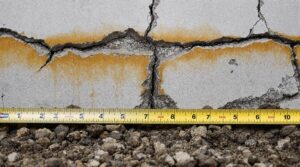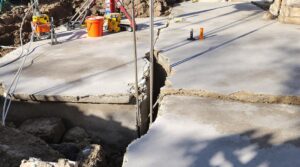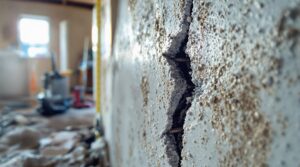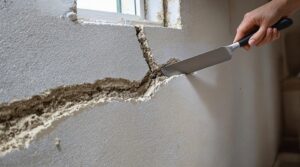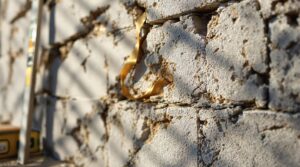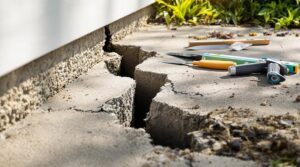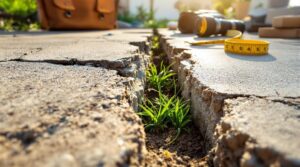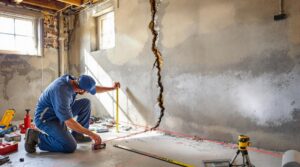Hydrangea roots can potentially damage foundations due to their growth patterns and ability to exert pressure on surrounding structures. The root system's shallow, spreading habit and requirement for consistent moisture contribute to this risk. Soil composition and type also play a significant role in determining the extent of root growth and potential impact on foundations. Further exploration of the factors influencing hydrangea root growth and strategies for safe planting and maintenance can provide valuable insights for mitigating this risk.
Key Takeaways
- Hydrangea roots can exert pressure on foundations, potentially causing damage, especially if planted too close to the structure.
- Soil type, moisture levels, and root growth patterns can impact soil and foundation stability, increasing the risk of damage.
- Larger, mature hydrangeas with extensive root systems pose a greater risk of foundation damage due to increased root spread and depth.
- Planting hydrangeas at least 3-4 feet away from foundations and regular root pruning can help control root spread and reduce damage risks.
- Choosing compact or dwarf hydrangea varieties and monitoring soil moisture can minimize potential risks and prevent overwatering.
Understanding Hydrangea Root Systems
The root system of a hydrangea plant is a complex network of fibrous and adventitious roots that play an essential role in supporting the plant's growth and development.
This intricate network allows the plant to absorb and store water and nutrients, facilitating healthy growth and flower production.
The root structure of a hydrangea plant is characterized by a shallow, spreading habit, with roots often growing near the soil surface.
This allows the plant to efficiently capture moisture and nutrients from the surrounding soil.
Regarding moisture needs, hydrangea roots require consistent and adequate moisture, especially during the plant's active growing season.
A lack of sufficient moisture can lead to root damage and decreased plant performance.
Understanding the root system and moisture needs of hydrangea plants is essential for providing ideal care and promoting healthy growth.
A well-developed root system is critical for supporting the plant's overall development.
Factors Affecting Root Growth and Depth
Hydrangea root growth and depth are influenced by a combination of genetic and environmental factors. Soil composition, in particular, plays a significant role in determining root development. For instance, hydrangeas grown in well-draining soils tend to develop deeper root systems, while those in heavy clay soils may exhibit more shallow root growth. Moisture levels also impact root growth, with consistent moisture promoting healthy root development.
| Soil Type | Moisture Level | Root Depth |
|---|---|---|
| Well-draining sand | Low-moderate | 12-18 inches |
| Loamy soil | Moderate-high | 18-24 inches |
| Heavy clay | High | 6-12 inches |
| Rocky soil | Low | 6-12 inches |
Understanding these factors is essential for predicting the potential impact of hydrangea roots on surrounding structures. By considering soil composition and moisture levels, individuals can better anticipate and mitigate potential risks associated with hydrangea root growth.
Planting Hydrangeas Near Foundations: Risks and Considerations
When planting hydrangeas in close proximity to foundations, careful consideration must be given to the potential risks of root growth and its impact on surrounding structures.
The roots of hydrangeas can exert significant pressure on foundations, potentially compromising foundation stability and causing damage to the structure.
The following factors should be considered when planting hydrangeas near foundations:
- Root growth patterns: The growth patterns of hydrangea roots, including their depth and spread, can impact the stability of the surrounding soil and foundation.
- Soil moisture: Changes in soil moisture can cause the soil to shrink or swell, potentially shifting the foundation and causing damage.
- Plant size and maturity: Larger, more mature hydrangeas have more extensive root systems, increasing the risk of damage to foundations.
- Foundation type and condition: The type and condition of the foundation can affect its susceptibility to damage from hydrangea roots.
Strategies for Safe Planting and Maintenance
Careful planning and execution are necessary to mitigate the risks associated with planting hydrangeas near foundations. Planting at a safe distance from the foundation is vital to prevent damage. Generally, a distance of at least 3-4 feet is recommended to allow for mature growth of the hydrangea and minimize the risk of root encroachment.
Regular root pruning can help control the spread of hydrangea roots and reduce the risk of foundation damage. Monitoring soil moisture is also essential, as overwatering can exacerbate root growth and increase the likelihood of damage.
Mulching around the base of the plant can help regulate soil moisture and reduce the need for frequent watering. By adopting these strategies, homeowners can enjoy the aesthetic benefits of hydrangeas while minimizing the risks associated with their growth.
Periodic inspections of the plant and surrounding soil can also help identify potential issues before they become major problems.
Choosing the Right Hydrangea Variety for Your Space
How can homeowners balance the desire for a beautiful, thriving hydrangea with the need to protect their foundation from potential damage?
Choosing the right hydrangea variety for the space is essential. Some hydrangea varieties are more suitable for areas near foundations due to their compact growth and less extensive root systems.
When selecting a hydrangea variety, consider the following factors:
- Growth habits: Compact or dwarf varieties are less likely to cause foundation damage.
- Sun exposure requirements: Blue hydrangea varieties require partial shade to full sun, while pink varieties can tolerate more sun exposure.
- Mature plant size: Choose varieties that will not outgrow the allocated space.
- Soil preferences: Select varieties that thrive in the local soil conditions, reducing the need for frequent watering or fertilization.
Frequently Asked Questions
Can Hydrangea Roots Grow Through Concrete or Asphalt?
Hydrangea root growth can potentially penetrate weak points in concrete or asphalt, but is unlikely to grow through solid, intact structures. Employing root barrier solutions, such as HDPE membranes, can prevent invasive root growth and protect infrastructure.
How Long Does It Take for Hydrangea Roots to Cause Damage?
Research indicates 15% of foundation damage is attributed to root growth from plants. Hydrangea root growth timeframe to cause damage varies, typically 10-20 years, depending on factors such as soil type and foundation vulnerability. To mitigate the risk of tree root damage to foundations, homeowners should be aware of planting distances and the species of trees and shrubs in their landscaping. Regular maintenance and monitoring can help identify any early signs of root encroachment before significant damage occurs. Consulting with a professional can also provide valuable insights into safe planting practices that preserve both the beauty of the landscape and the integrity of the home’s foundation.
Do All Types of Hydrangeas Pose the Same Risk to Foundations?
Distinct variations exist among different hydrangea species regarding hydrangea root behavior, implying not all types pose equal risk to foundations, with some remaining compact and others spreading more extensively, thereby potentially affecting surrounding structures differently.
Can Hydrangeas Be Safely Planted Near a Septic System?
Majestic hydrangeas sway in the breeze, but their beauty belies a potential threat. When planting near a septic system, considerations include root depth and water absorption. Follow hydrangea planting tips to avoid compromising the system's integrity.
Are Hydrangea Roots More Invasive in Certain Climates or Soils?
Hydrangea root invasiveness varies by climate impact and soil composition. Warmer climates with ample moisture foster more aggressive growth, while clay soils can contain roots better than sandy soils, which allow for freer root expansion.
